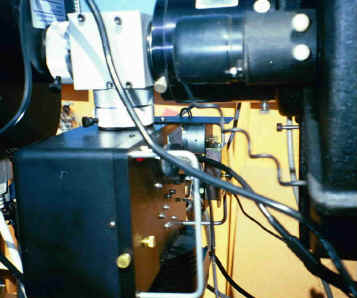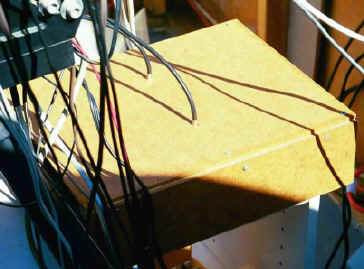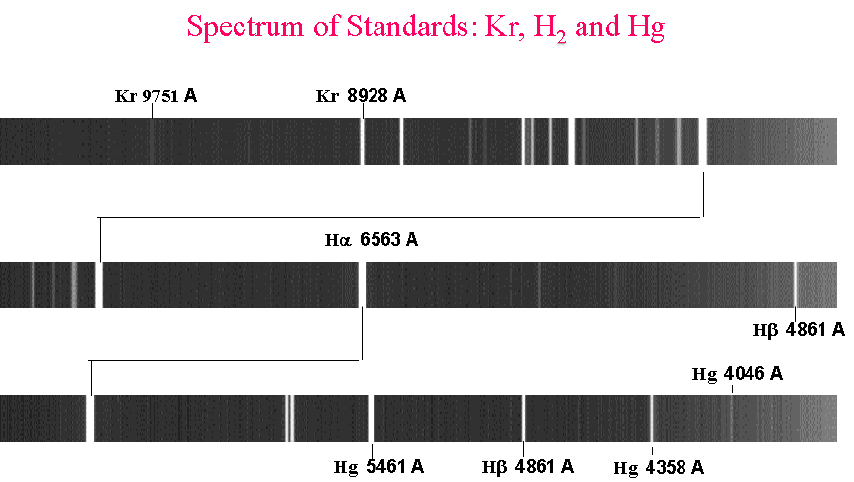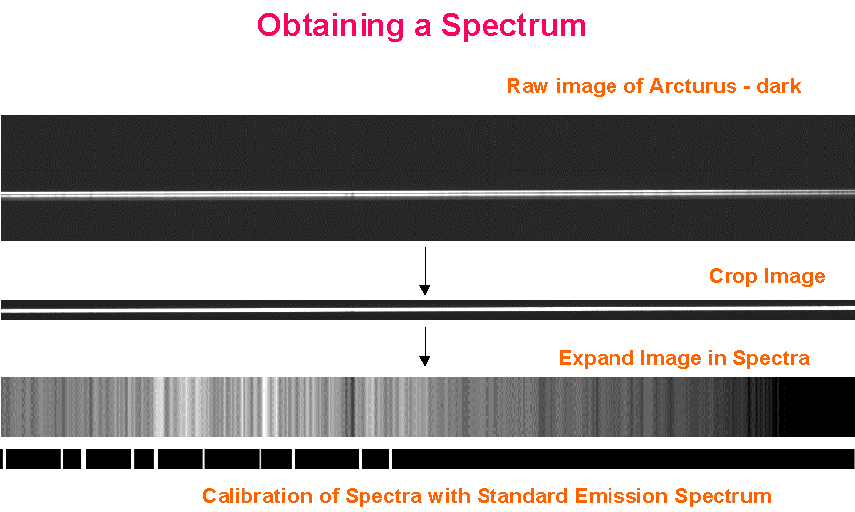
Click on picture for a larger version.
Contribution: Dale Mais
In 1999, Santa Barbara Instrument Group (SBIG) released a novel product, a spectrometer, into the amateur market place.

Click on picture for a larger version.
The spectrometer is designed to operate with the ST-7/8. The object that is
to be analyzed is viewed on the tracking CCD, simultaneously with the slit.
The slit is backlit by an LED during setup to render it clearly visible on the
tracking CCD.
The object is manually maneuvered onto the slit using the telescope controls,
and is held there using SELF GUIDING during a long exposure. The spectra is
recorded by the imaging CCD, oriented long-ways so the spectra falls across
765 pixels, with a height of about 16 pixels for stellar sources.
Two gratings and two slits are available for maximum versatility.
Features of the SBIG Self-Guiding Spectrometer:
| Object analysed is viewed on tracking CCD simultaneously with slit (back illuminated) | |
| Object is held on slit by self-guiding feature, slit = 18 microns | |
| Spectra recorded on imaging CCD | |
| Two gratings: | 150 lines/mm <=> 4.3 A/pixel |
| 600 lines/mm <=> 1.07 A/pixel | |
| Wavelength range: | ~3800-7500 A (range in my experience 3600-10000A) |
| ~3200 A coverage in lo-resolution mode | |
| ~750 A coverage in hi-resolution mode | |
| Input window on bottom of unit for introducing calibration standards | |

Spectrometer attached to rear of C-14 via flip mirror
Several modifications to the spectrometer have been made which makes operation more convenient:

Gas discharge tubes with fiber optic leads to spectrometer


See also the SBIG spectrograph review & test by Olivier Garde!
If you are interested in spectroscopy join the SBIG spectrometer user group.